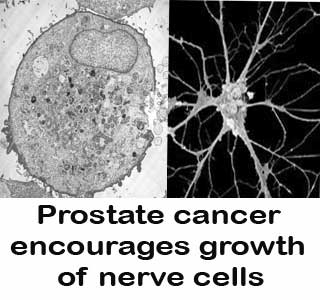
Earlier researches on this topic have revealed that prostate cancer follows the growth of nerves; however this research states that it encourages nerve growth.
Dr. Gustavo Ayala, professor of pathology and urology at BCM, and first author of the research, says that, “This is the first report of this phenomenon. It represents an important new target in prostate cancer treatment, as prostate cancers are more aggressive when neurogenesis is present.”
Ayala further says that, “We also believe that axongenesis and neurogenesis is found not only in prostate cancer, but is potentially a more global phenomenon, particularly relating to those cancers that grow along nerve paths.” He states that this discovery is similar to the discovery of angiogenesis or growth of new blood vessels. Both of these are an element of the wound repair system.
Ayala along with his colleagues analyzed the neurogenesis in the human tissues of patients who suffered from prostate cancer. They compared these tissue cultures with the prostate tissues from patients who had died suffering from other ailments. They calculated the density of nerves in the human prostate tissues, including those with prostate cancer. Researchers discovered that nerve density was higher in patients with prostate cancer and in precancerous lesions.
Ayala made use of an entire prostate gland, in order to reconstruct the prostate. He did so, so that the scientists could witness the growth of nerves and axons in three-dimensions. This computerized process required continuous computer processing.
Semaphorins are embryologically active molecules that regulate nerve growth and direction. The researchers believe that they can regulate the growth of new nerves and axons through the semaphoring 4F protein. It is stated that a majority of these disappear in adults; however this protein is effective in wound repair. When there is an excess semaphorin 4F production, it results in the growth of new nerves. It is said that curbing this protein also curbs the growth of new nerves.
This research was funded by the National Institutes of Health and the Tumor Microenvironment Network of the National Cancer Institute and its findings are published in the Clinical Cancer Research journal.
